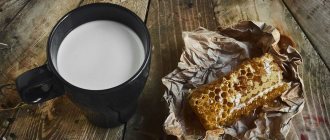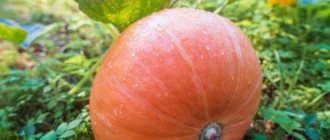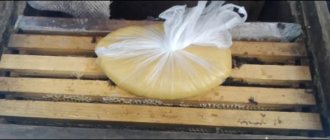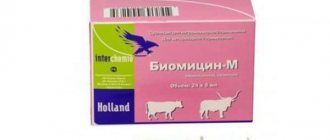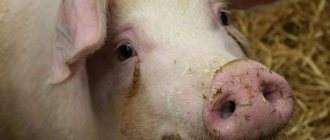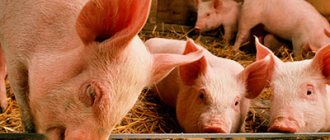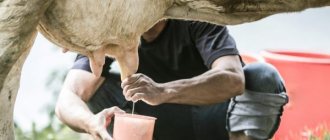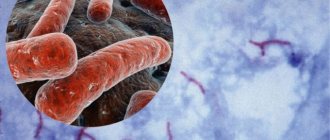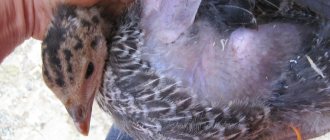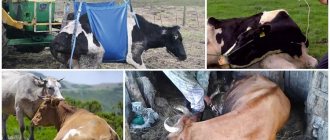Treatment with bees, as apitherapy is called, is a method of treating humans with bee stings and their products.
It can be used to treat specific problems or as a preventive measure. The pioneer of modern apitherapy is Dr. Philip Terch. Today, bee healing is used all over the world.
The term "apitherapy" sounds very mysterious. But many of us are often exposed to it without knowing it. "Bee" in Latin is "Apis". Therefore, apitherapy is the treatment and prevention of human diseases using bees and their products.
Set of apitherapy methods
According to the principles of apitherapy, all products created by bees are beneficial to human health:
- Honey is the most famous product. Used for colds, inflammation, loss of energy, etc. It can be used for massage and wrapping.
- Propolis – used by bees as a disinfectant. In folk medicine it is used to destroy bacteria and prevent their spread.
- Royal jelly is a very nutritious product. Used in cosmetics, as a food additive, and in pharmaceuticals.
- Bee bread (fermented pollen) – has a positive effect in the fight against allergies, asthma and inflammation.
- Wax is the least active substance. The aroma of candles helps with respiratory diseases.
- Poison - treatment with bee stings acts against rheumatism, tennis elbow, dissolves some unwanted substances deposited in the joints, etc.
Beekeeping, although not a product, has a positive effect on health, especially mental health.
Structure of a worker bee
All parts of the worker bee’s body are designed so that it is as well adapted as possible to perform its functions:
- The outer cover of the body is very elastic.
- There are 5 ordinary eyes on the head: 3 on the parietal part, 2 on the sides.
- Antennae extend from the head, which are the organs responsible for the bee’s sense of smell and touch.
- The oral apparatus contains a proboscis, 6.4 to 7.2 mm long, and jaws.
- There is a pharyngeal gland on the head that secretes royal jelly and the enzyme invertase.
- The bee has 4 wings, which are attached to the abdomen.
- 6 legs that attach to the chest. They have baskets and spurs, which are necessary so that the bee can collect pollen.
- In the abdomen there is a honey crop, where the bee collects nectar.
The benefits and harms of bee venom for the body
How does bee venom affect the body? By dilating tiny blood vessels and the capillary system around important organs such as the heart, brain, respiratory system, and liver, it stimulates blood circulation and metabolism. This allows the body to restore normal function of all tissues, thereby significantly reducing cholesterol levels. The function of red blood cells in the bone marrow improves, the hemoglobin content in the blood increases, which is very important for the prevention of myocardial infarction or stroke.
Treatment with bee stings prevents the adhesion of red blood cells and thus helps prevent and treat thrombosis. Apitherapy helps dissolve urinary stones and has a positive effect on improving sleep and appetite.
After application, bee venom (apitoxin) affects the fine nerve endings in the skin and body. But by preventing the transmission of nerve impulses, it can cause a severe allergic reaction. The consequences can range from mild local swelling to severe systemic reactions, anaphylactic shock, or even death. Therefore, bee stings should only be carried out under medical supervision.
Apitoxin causes a decrease in blood pressure (hypotension), so it is recommended to take vitamin C and caffeine before using it.
Adverse reactions to treatment include possible worsening of multiple sclerosis. Frequent exposure to apitoxin can also lead to arthropathy.
Indications and contraindications for apitherapy
The benefits of bee stinging for the body are manifested in the following diseases:
- neuritis;
- myalgia;
- neuralgia;
- decompensated osteoarthritis;
- vertebrogenic syndromes.
Apitherapy is also recommended for many other diseases, including:
- multiple sclerosis;
- carpal tunnel syndrome;
- rheumatism;
- skin diseases;
- malaria;
- Lyme disease, etc.
Treatment with bee stings at home and in specialized institutions, the use of other beekeeping products is contraindicated:
- people suffering from allergies;
- patients with severe heart disease;
- diabetics;
- patients with pulmonary tuberculosis, sexual disorders.
Apitherapy is also contraindicated in the following cases:
- young and very old age;
- exhaustion;
- high mental stress;
- increased body temperature;
- pregnancy;
- kidney diseases;
- blood diseases;
- liver disorders;
- diseases of the endocrine glands;
- pancreatic diseases;
- infectious diseases;
- CNS disorders;
- sclerosis.
Treatment with bees (both stings and bee products) is due to the effect on the immune system, and therefore first requires an allergy test. To do this, use one bite. If there is no negative reaction, there is no allergy.
Bees will die, people will die, why do they say that?
Researchers are confident that people need bees almost as much as they need air. According to them, if bees disappear from the face of the Earth, then within 4 years the human race will also die out, because there will be no one to provide people with uninterrupted food.
Let's analyze the chain of events that can happen:
- First, plants that will remain without pollination will begin to die.
- As a result, the animals will die, because they will simply have nothing to eat.
- When there are no more plants or animals, man will be left without food and will eventually die of starvation.
To prevent all this from happening, we urgently need to start taking care of nature! Any interference with natural processes on Earth leads to disastrous consequences, and bees are no exception.
Apitherapy at home
Apitherapy is not new. While bee products such as propolis, honey, royal jelly are quite common, stings, i.e. the use of poison is a lesser known remedy.
Apitherapy, even at home, should be carried out under medical supervision. This is important in order to control possible complications.
The exact number of bites depends on the person and their condition. The sting remains in the body for some time (up to 1 minute) and is not removed immediately.
During bee therapy you should avoid alcohol.
What diseases can be treated
Bee venom treats arthritis and rheumatism. This is a good analgesic for rheumatic pain, dissolving deposits at the site of inflammation and helping to wash them out.
Apitoxin helps with back pain, because... has analgesic and anti-inflammatory effects.
It is used as an adjuvant for skin diseases, supports the treatment of sclerosis, multiple sclerosis, borreliosis, chronic fatigue syndrome.
Bee venom can be used in the treatment of trigeminal neuralgia and musculoskeletal disorders.
After using apamin (a component of bee venom), the symptoms of myotonic muscular dystrophy, such as muscle weakness, cramps and lack of coordination, are relieved.
Stinging points - scheme of use for various diseases
The use of bee stings should occur sequentially, with a break for regeneration and rest of the treated organism. Preferably, the application is carried out by direct application of stings to the affected areas in increasing doses.
The scheme for conducting apitherapy at home (stinging points in the photo below) depends on the specific health problem:
| Disease | Sting points |
| Arthritis, joint diseases | Along the spine, over the painful joint, around the painful joint |
| Varicose veins, vascular diseases | Above vascular bulges, nodules |
| Nervous disorders | Center of the lumbar region (ensuring that apitoxin enters the lymphatic fluid) |
| All diseases | Apply directly to the painful area |
Where to get poison, bee stings, bee products
If you want to try apitherapy only as a preventive measure, visit your nearest beekeeper (bees, honey, other products) or wellness center (honey massage, apitoxin injections). You can also purchase cosmetics or ointments with the active substance at the pharmacy.
Specialist supervision is required to support disease management.
Which flowers cannot be pollinated by bees?
Important: Attracting bees to the land can be a real problem for the farmer. There are plants that bees practically do not pay attention to. These plants include clover, as well as flax and alfalfa.
But people have found ways to attract bees to clover. For this use:
- Blue and yellow bait shields near clover growing areas.
- The bees are fed with sugar syrup.
Bee "Karnika" - features of the breed
First, a feeder with sugar syrup is placed near the apiary. Then, when the bees have eaten, feeders with sugar syrup are placed near the clover. In this case, there is no need to place food in the hive; the bees will fly to the clover feeders.
Bees don't land on red clover, they don't see red. Therefore, you can use a bait crop in the form of pink clover, which is a good honey plant. The two varieties are sown next to each other. This is how bees visit red clover.
In winter, some beekeepers allow bees into greenhouses to pollinate the crops growing there. But artificial pollination is more often used. Chemicals used to grow crops in greenhouses can cause great harm to the bee colony.
Bee on a clover flower
Bees love the following types of plants :
- Fruit trees: apple, plum, pear, raspberry, apricot, strawberry, strawberry, cherry.
- Vegetables and melons: watermelons, melons, cucumbers, pumpkins.
- Forage and oilseeds: buckwheat, rapeseed, sunflower, white mustard.
- Flowers, herbs: jasmine, lavender, acacia, phacelia, lemon balm, petunia, hyacinth, etc.
Important: If you want to attract bees to your site, take care of planting favorable plants on your site.
What plants do bees love?
The mechanism for attracting bees is as follows:
- Plants must have a strong aroma; bees can smell it.
- Flowers should be colorful. Bees love blue, white, yellow, and orange flowers the most. Bees do not see red flowers and practically do not land on them.
- Flowers with a simple structure have a better chance of pollination. It is easier for bees to get to the nectar. Bees are smart insects; they will not want to waste their time and energy extracting nectar from flowers with a complex structure if there are simple ones nearby.
- It is worth taking care of continuous flowering in the area. This way, the bees will always have a source of food, and the gardener will always have good harvests.
The biological role of bees in nature is very important. More than a third of the world's crop production depends on the activity of bees. People should value and protect bees with all their might.
How exactly can bees be used?
Apitherapy procedures are applied taking into account the specific disease.
Bee sauna
Lying on a wooden board from a beehive without a mattress helps with mental problems. This procedure reduces hyperactivity, improves heart function, and calms breathing. It is often used for hyperactive children or ADHD.
Apibanya
Apiespiration
Breathing air directly from the hive helps people with difficulty breathing. Overall, this procedure strengthens the body.
Honey massage
Classic honey massage cleanses and softens the skin without opening the lymph. Detoxifying massage is more demanding on the body. It may take several hours. This massage increases blood pressure and is therefore not very suitable for people with hypertension.
Honey massage
Bee venom
It is used to treat rheumatism, strengthen the body's defenses, and eliminate disorders of the peripheral nervous system using direct bites.
Apitherapy in medical institutions
Apitoxin is administered through controlled insect bites. Using this method is problematic because... Bees always produce different venom depending on where they eat. Even the same dose may have different effectiveness.
This method improves blood circulation, has immediate pro-inflammatory and secondary anti-inflammatory effects, relieves pain, affects the pituitary-cortical system, slows the growth of tumor cells and affects the immune system.
The poison is used for both prevention and treatment. This therapeutic method is intended to relieve the condition of patients suffering from osteoarthritis of the cervical vertebrae or chronic pain syndromes, especially back pain.
Apipunktura
A method of application to acupuncture points, due to which the poison enters the blood. It is used to treat arthritis and asthma, relieve rheumatic diseases, and PMS.
Microapuncture
A modern version of apiuncture, which involves taking the sting of a live bee and using it to make micro-needles into the skin. The method is less painful and effective than apipuncture. Used to eliminate cosmetic defects, treat scars, various painful and inflammatory conditions, and gingivitis.
Injections
The injection method is the most gentle for both bees and patients. Apitoxin is obtained in a gentle way without the need to kill the insect.
Helpful information
Bee venom in small doses is a medicine, but in large quantities it causes intoxication. The threshold at which it causes poisoning is relatively high: in healthy men it is 700-1000 bites, in women slightly less, and in children up to 90 bites. The exception is people with an allergy to apitoxin (about 1% of the population), who have zero tolerance.
This fact must be kept in mind. Firstly, do not underestimate bee venom, which in exceptional cases can have fatal consequences. Secondly, to prevent fear of him. Indeed, according to the latest scientific data, it is an excellent therapeutic agent.
Bee animal or insect
First of all, you need to remember that bees have a biological classification according to which:
| Kingdom | Animals |
| Type | Arthropods |
| Class | Insects |
However, a bee is an insect that is studied by a specific science - apiology.
There are several important signs that prove that a bee is an insect:
- The body consists of three parts - the head with the abdomen and the torso.
- She has a mustache.
- They have compound eyes, like all insects.
- Several pairs of paws.
- There are wings.
